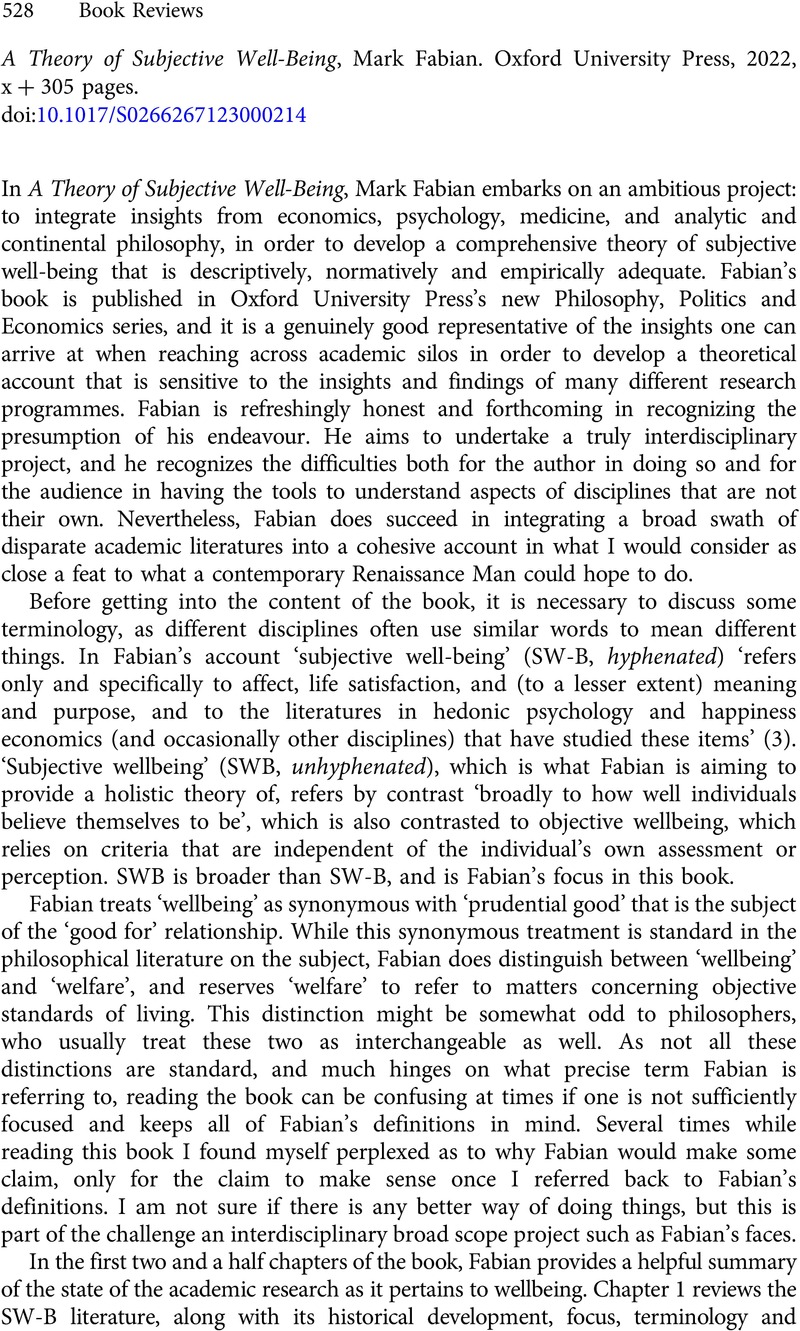No CrossRef data available.
Article contents
A Theory of Subjective Well-Being, Mark Fabian. Oxford University Press, 2022, x + 305 pages.
Review products
A Theory of Subjective Well-Being, Mark Fabian. Oxford University Press, 2022, x + 305 pages.
Published online by Cambridge University Press: 07 August 2023
Abstract
An abstract is not available for this content so a preview has been provided. Please use the Get access link above for information on how to access this content.

- Type
- Book Review
- Information
- Copyright
- © The Author(s), 2023. Published by Cambridge University Press
References
Wolff, J. and De-Shalit, A. 2007. Disadvantage. Oxford: Oxford University Press.
10.1093/acprof:oso/9780199278268.001.0001CrossRefGoogle Scholar



